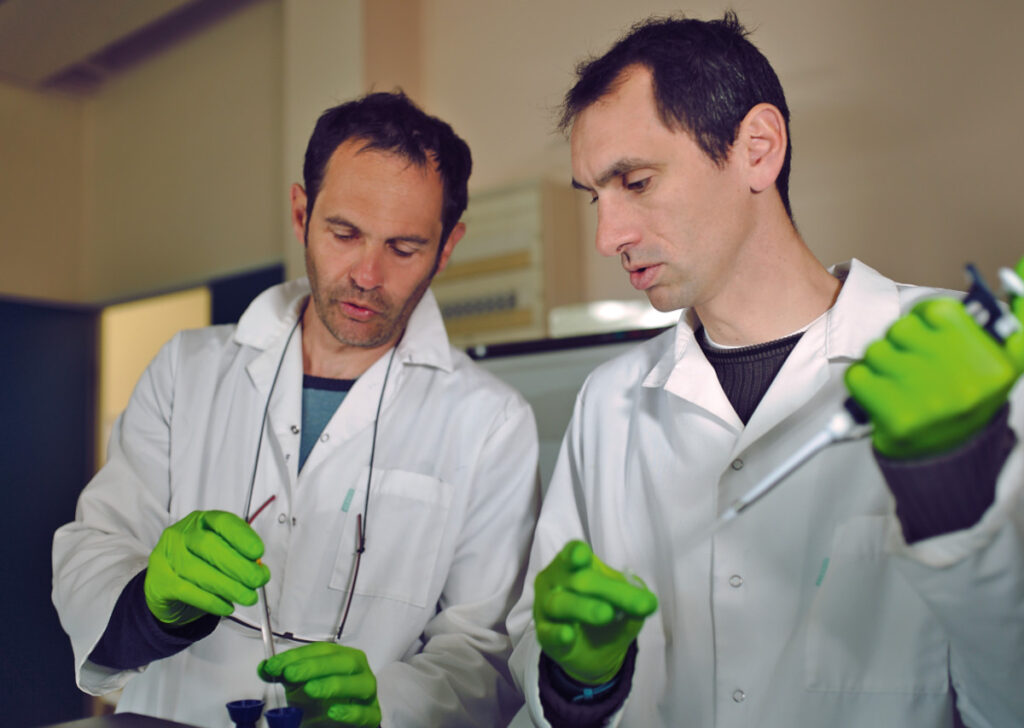[LUM#10] Cells in crisis
Energy sobriety doesn't just apply to our lifestyles, it also conditions the survival of our cells. François Favier and Vincent Ollendorff have identified the major role played by the REDD1 protein in reducing the cell's energy expenditure under stress.

"If we had to sum up the role of REDD1, we could say that it's a bit like the Pierre Rabhi of the cell: it slows down energy expenditure in order to adapt to conditions of scarcity," explain François Favier and Vincent Ollendorff, researchers at the Muscular Dynamics and Metabolism laboratory. For almost six years, they have been studying the reaction of muscle cells to stress situations responsible for muscle atrophy.
Vital energy
Walking, running, grasping an object, holding a yoga posture, talking... All these actions are made possible by muscle cells which, when contracting, produce mechanical tension. To contract, these cells consume energy - ATP. Each cell thus has " a kind of factory capable of producing the ATP it needs to function. It's called the mitochondrion ", explains François Favier.
In a normal situation, this energy is used by the cell to synthesize the proteins it needs to function. Liver cells produce proteins for digestion, eye cells for vision and muscle cells for contraction," explains Vincent Ollendorff, "and this protein synthesis takes place in the endoplasmic reticulum, located close to the mitochondria.
A sense of priorities
But what happens when the cell is confronted with a stressful situation such as physical exertion, fasting or a reduction in oxygen supply? " To save itself, the cell must prioritize its activities and put protein synthesis, which is too energy-intensive, on stand-by. The cell will then release proteins capable of slowing down energy expenditure.
In this role of energy censor, research had long identified the protein AMPK, " a sort of firefighter of the cell ", describes Vincent Ollendorff, but the two Montpellier researchers are the first to highlight the early role of REDD1. REDD1 could be compared to a fire extinguisher," continues the biologist, " it acts before AMPK and in a more targeted, adapted way."
How does it work? " REED1 physically moves the energy-producing mitochondria away from the site of protein synthesis, redirecting energy to where muscles contract and produce muscle tension," explains François Favier. Once the stress situation has passed, mitochondria and reticulum come together to resume the manufacture of new proteins. Proof that, in an energy crisis, adaptation remains the best solution.
UM podcasts are now available on your favorite platforms (Spotify, Deezer, Apple podcasts, Amazon Music...).